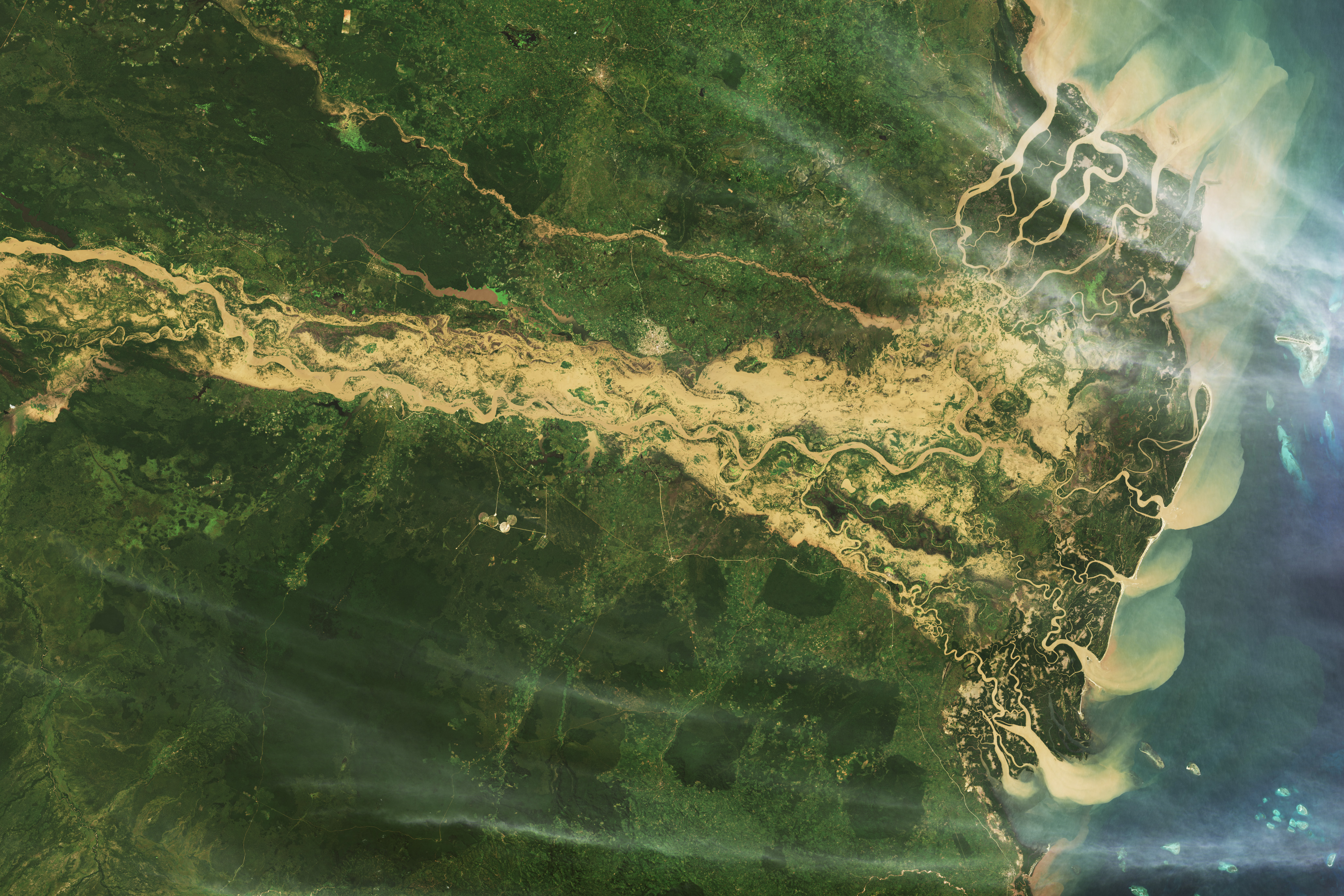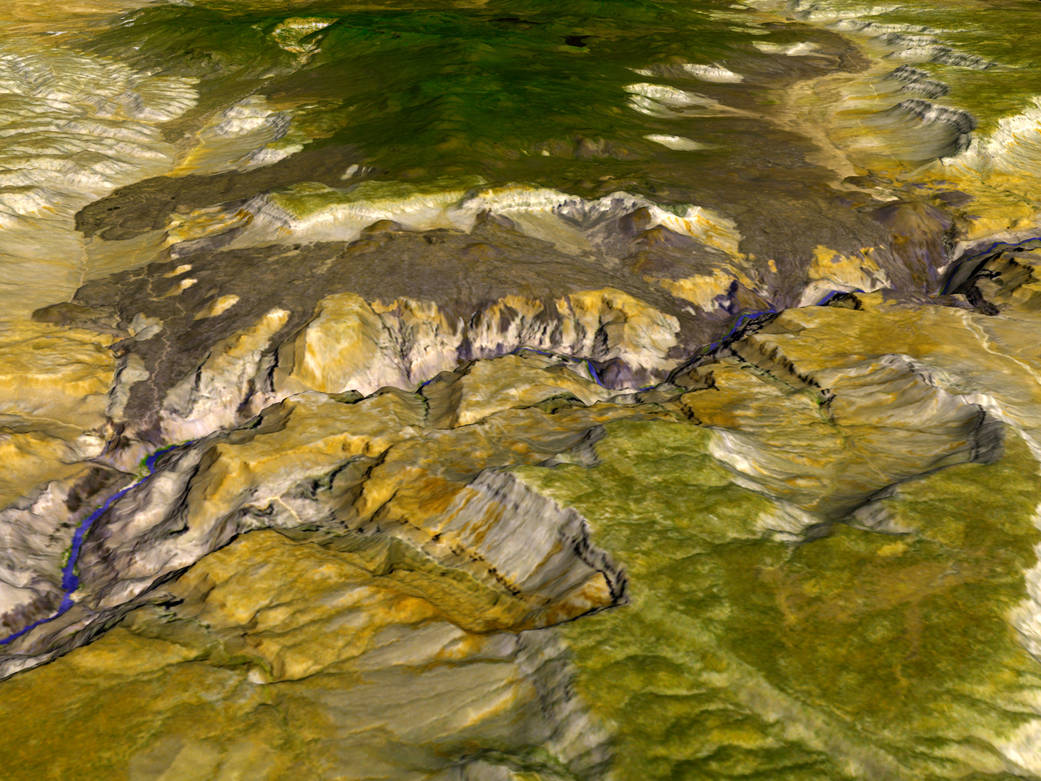Over time, natural processes like floods and volcanoes deposit layers of rock on the Earth’s surface and to delve through these layers is to explore our planet’s history. Rock layers are exposed through human activity, such as drilling or excavation, but also by rivers and other natural phenomena.
One of the best, and most well-known, examples of a river exposing ancient rock is Colorado River in Arizona’s Grand Canyon. The Grand Canyon also has a history of relatively recent volcanism in geologic terms. The evidence – hardened lava – spills down the canyon walls all the way to the river.
The Advanced Spaceborne Thermal Emission and Reflection Radiometer (ASTER) on NASA’s Terra satellite captured this image of the Grand Canyon. ASTER detects visible and infrared light. Because different minerals reflect different portions of the light spectrum, ASTER can detect the mineral compositions of the rocks it observes, as well as detect vegetation. In this image, lava fields appear brownish gray, darker than the layers of limestone, sandstone and other rock. Vegetation appears green, and sparsely vegetated areas appear mustard. The Colorado River appears blue-purple.
Geologists estimate that between 1.8 million and 400,000 years ago, lava flows actually dammed the Colorado River, with flows that were as much as 600 meters high (about 1,969 feet). Over time, enough water and sediment built up to push the river flow over the tops of these dams and eventually erode them away. Today, remnants of these lava dams remain throughout the area, along with the much older rock layers they cover. The most well known example of a “frozen” lava cascades is Lava Falls, which spills down to the river next to a cinder cone known as Vulcan’s Throne. Numerous other flows spread down into Whitmore Canyon, a Colorado River tributary.Image credit: NASA/GSFC/MITI/ERSDAC/JAROS, and the U.S./Japan ASTER Science Team
2 min read




























